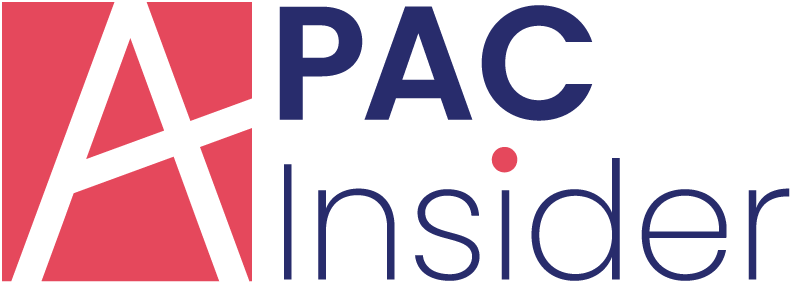Machine learning (ML) is leaving a market on all sorts of everyday business practices, and the wrangling of financial risks is one of the most noteworthy examples of how this tech can make a difference.
To show how valuable ML can be in this context, we’ve put together an overview of the main areas where its effects are being felt, and how the associated benefits play out for modern organizations.
Predictive Analytics
Predictive analytics is taking financial risk management to new heights. Banks and investment firms, equipped with machine learning algorithms, are able to anticipate potential risks like chess grandmasters foreseeing opponent moves.
How does this work? Algorithms analyze historical data to spot patterns. These models forecast everything from market downturns to client default risks.
Consider a hedge fund leveraging predictive analytics:
- Historical Market Data Analysis: The fund processes years of market behavior, identifying signals that precede significant changes.
- Customer Behavior Insights: By tracking transaction histories, the fund predicts which clients might encounter financial trouble.
- Economic Indicators Monitoring: Algorithms keep an eye on economic trends and geopolitical events, providing early warnings of adverse impacts.
But it’s not just about prediction. It’s also about agility. When these systems detect a threat, firms can adjust strategies in real-time, avoiding potential losses.
Productivity is also part and parcel of this shift, with a Gartner survey finding that 49% of finance execs perceive upsides of this type in adopting advanced analytics.
Fraud Detection
Another area of finance that machine learning is revolutionizing right now is fraud detection, which becomes especially relevant when expanding internationally. Modern systems monitor transaction patterns to flag anomalies. So rather than having to spot a needle in a haystack from 50 paces with the naked eye, you’ve got a massively strong magnet capable of pulling it out right away.
Key techniques include:
- Supervised Learning: Training models with labeled datasets of known fraud cases to identify suspicious activity.
- Unsupervised Learning: Discovering unknown fraud types by analyzing untagged data and recognizing outliers.
- Reinforcement Learning: Continuously improving the model’s accuracy by rewarding correct predictions and penalizing errors.
For instance, a credit card company can use this tech for:
- Transaction Monitoring: It detects when purchases deviate from usual habits, such as sudden high-value transactions or unusual locations.
- Behavioral Analysis: The system evaluates user behavior over time, catching subtle signs of fraudulent actions before they escalate.
A study from KPMG found that ML systems can shrink the number of fraudulent transactions by as much as 40%. In turn the number of false positives created by detection systems is minimized. This both saves money and also enhances customer trust, as nobody enjoys inaccurate alerts interrupting their day.
Credit Scoring
On top of what we’ve covered so far, ML is also breathing new life into credit scoring. Traditional models often rely on rigid criteria, like credit history and income. But ML adds layers of sophistication, providing a clearer picture of creditworthiness.
Here’s how:
- Feature Engineering: Algorithms identify significant factors from diverse data sources—employment patterns, spending habits, social media activity.
- Adaptive Learning: These models continuously update as new data flows in, staying relevant to the current economic climate.
- Deep Learning Networks: They scrutinize complex datasets to uncover hidden relationships that might escape human analysts.
In the case of a fintech company leveraging ML for lending decisions you get:
- Dynamic Risk Profiles: It generates real-time risk profiles for applicants using vast datasets beyond traditional financial records.
- Automated Decision-Making: The system makes swift lending decisions without manual intervention while ensuring high accuracy.
Any organization that’s keen to adopt this tech for in-house use needs to ensure employees are adequately trained in deploying it effectively. Thankfully there are machine learning courses that cater to a cavalcade of use cases, so it’s simply necessary to select the right ones to bring your team up to speed.
Compliance Monitoring
Natural Language Processing (NLP) takes compliance monitoring up a notch, and that’s a big deal in a sector like finance where regulatory scrutiny is particularly stringent.
Here’s what NLP brings to the table:
- Automated Document Review: It scans contracts, emails, and reports for regulatory breaches or risky language.
- Sentiment Analysis: NLP tools gauge the tone and intent behind communications, flagging potential misconduct or fraud.
- Entity Recognition: These systems identify key entities—names, dates, monetary values—helping correlate data across multiple sources.
Let’s say a bank goes about implementing NLP for compliance. It would benefit from:
- Continuous Monitoring: The system reviews all employee emails and messages in real-time, catching issues before they escalate.
- Regulatory Updates Integration: When new regulations are issued, NLP models quickly adapt to ensure ongoing compliance without manual updates.
It’s worth pointing out that a recent Forrester report found that there’s a distinct lack of trust in finance-focused brands at the moment. For instance, of the 12 insurance companies covered in the survey, 8 were deemed to have a ‘weak’ rating for overall trustworthiness. Thus with more of a conspicuous approach to compliance, enhanced via automation, organizations can reclaim the faith of consumers.
Algorithmic Trading and Risk Mitigation Strategies
Financial markets are being revamped via algorithmic trading, as it provides speed and precision of a kind that were previously unimaginable. These algorithms execute trades based on predefined criteria, adjusting to market changes faster than any human could.
Key aspects include:
- High-Frequency Trading (HFT): Executing thousands of trades per second, exploiting tiny price discrepancies for profit.
- Market Making: Providing liquidity by simultaneously buying and selling assets to maintain market stability.
- Arbitrage: Identifying price differences across markets or instruments, securing risk-free profits through synchronized transactions.
Again, in the case of a hedge fund utilizing algorithmic trading for risk mitigation, you’d get advantages such as:
- Real-Time Adjustments: Algorithms monitor market conditions 24/7, making split-second decisions to minimize exposure during volatile periods.
- Portfolio Diversification: By automatically rebalancing portfolios based on current data, they ensure optimal asset allocation in real-time.
These benefits have practical implications in enhancing profitability and ensuring compliance with regulatory requirements, as discussed earlier.
Concluding Thoughts
It’s no secret that machine learning is redefining financial risk management, bringing predictive analytics, fraud detection, and credit scoring into a new era.
As we look forward, the integration of technologies like NLP and algorithmic trading will continue to evolve, providing even more sophisticated tools for managing risks. Financial institutions embracing these advancements are not only staying ahead but also ensuring long-term stability and growth.






















